Finding the best classic wrestling video games can feel overwhelming with so many titles across different eras and platforms. WWF No Mercy stands as one of the greatest wrestling games ever made, earning praise from fans and critics alike.
This guide breaks down 25 legendary classic wrestling video games, their standout features, and what made each title special for wrestling fans. Get ready to relive gaming’s greatest grappling moments.
Key Takeaways
WWF No Mercy (2000) earned an 8.5/10 rating and featured over 70 characters, becoming one of wrestling gaming’s greatest titles.
WWE SmackDown! Here Comes the Pain (2003) scored 8.6/10 and introduced the Elimination Chamber match to home consoles first.
WCW/NWO Revenge (1998) sold 1.88 million copies and established the grappling system that influenced all future wrestling games.
Fire Pro Wrestling series debuted in 1989 and costs $19.99 on Steam with thousands of community-created wrestlers available.
Wrestling Empire launched January 11, 2021, featuring 350 wrestlers and ranking 5th among top Nintendo Switch wrestling games.
Table of Contents
Classic Wrestling Video Game Titles
Wrestling games reached their peak during the late 90s and early 2000s… creating titles that fans still play today. These legendary games combined smooth gameplay, deep rosters, and features that modern WWE 2K titles struggle to match.
What makes WWF No Mercy a legendary wrestling game?
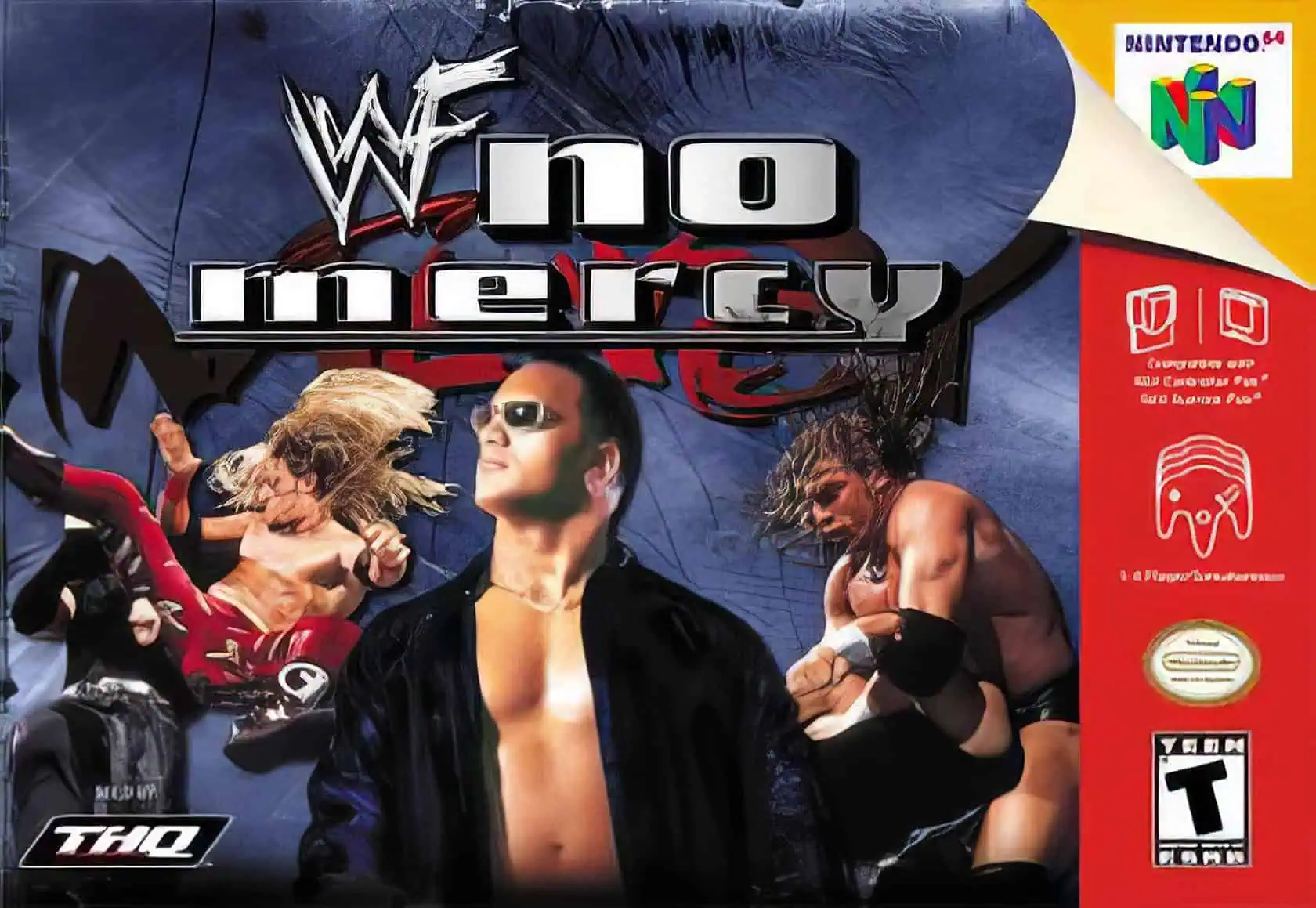
THQ released WWF No Mercy in 2000 for Nintendo 64, earning an impressive 8.5/10 rating that still holds up today. The game packed over 70 characters into one cartridge, featuring everyone from The Rock to Triple H, giving players the biggest roster of WWF superstars at the time.
Ladder matches became a signature feature, letting wrestlers climb for championship belts in thrilling encounters that captured the excitement of real WWE events.
The story mode revolutionized wrestling games by creating branching storylines where player choices mattered. Vince McMahon and other WWE personalities appeared throughout the campaign, making each playthrough feel authentic.
The game’s influence stretches to modern titles like AEW Fight Forever, which borrowed many of No Mercy’s core mechanics. An active online community still creates mods and hosts tournaments 24 years later, proving the game’s lasting appeal among wrestling fans and retro gaming enthusiasts.
Why is WWE SmackDown! Here Comes the Pain so popular?
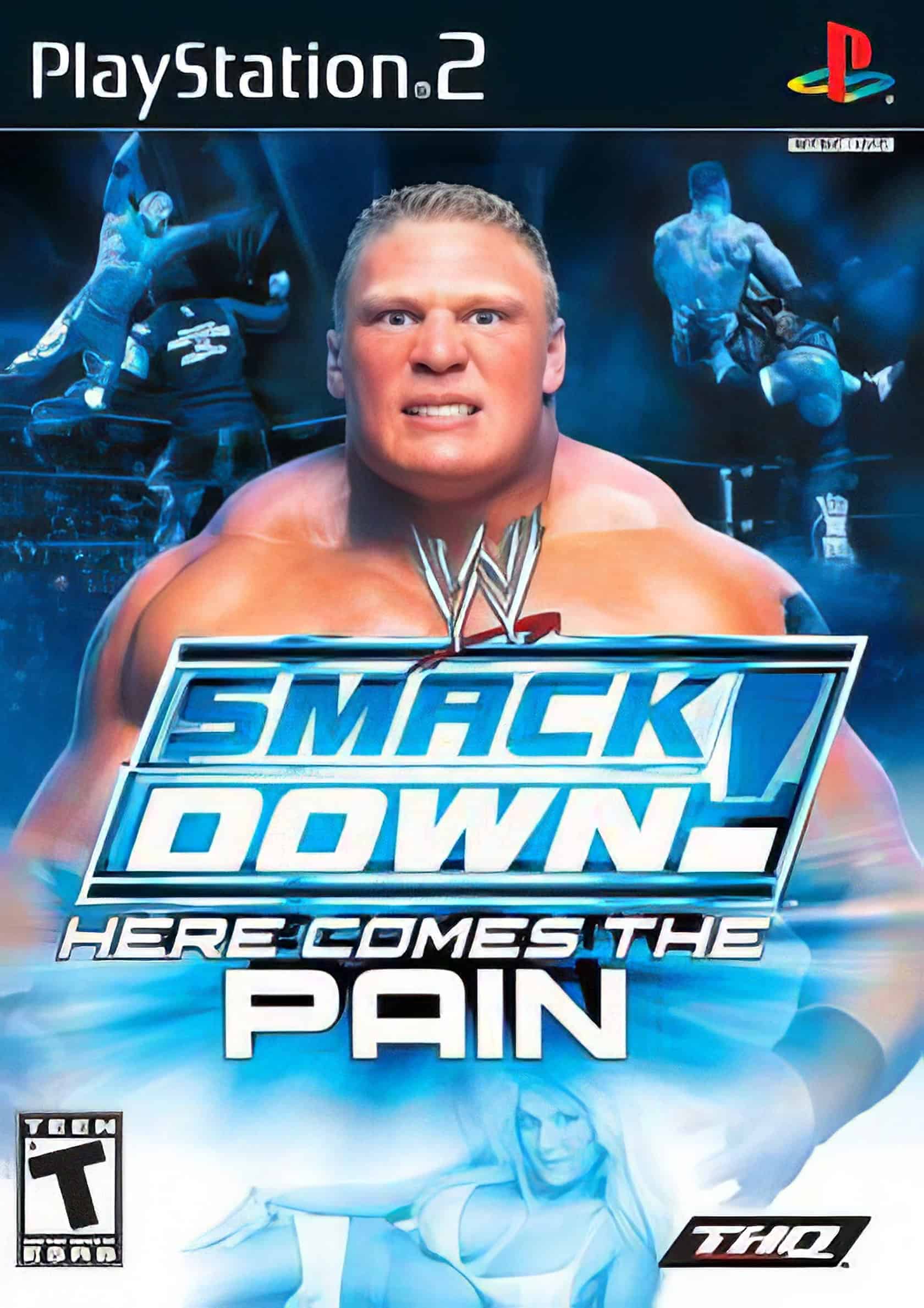
WWE SmackDown! Here Comes the Pain earned its legendary status through features that changed wrestling games forever. Released in 2003 for PlayStation 2, this title scored an impressive 8.6/10 rating from critics and fans alike.
The game introduced the Elimination Chamber match, bringing this brutal WWE concept to home consoles for the first time. Players could experience career mode with enhanced depth, following their created wrestlers through storylines that felt authentic to WWE programming.
Here Comes the Pain delivered the perfect mix of arcade fun and wrestling simulation that fans craved.
Graphics received a massive upgrade from previous SmackDown titles, showcasing WWE superstars like John Cena, The Undertaker, and Chris Jericho with stunning detail. The gameplay mechanics blended arcade-style action with simulation elements, creating an experience that satisfied both casual players and hardcore wrestling fans.
Legends mode allowed players to relive classic WWE moments, while the comprehensive Create-A-Wrestler system let fans build their dream roster. The game’s popularity stems from its ability to capture the excitement of WWE’s Attitude Era while introducing modern features that kept players engaged for countless hours.
What are the key features of WrestleMania 2000?
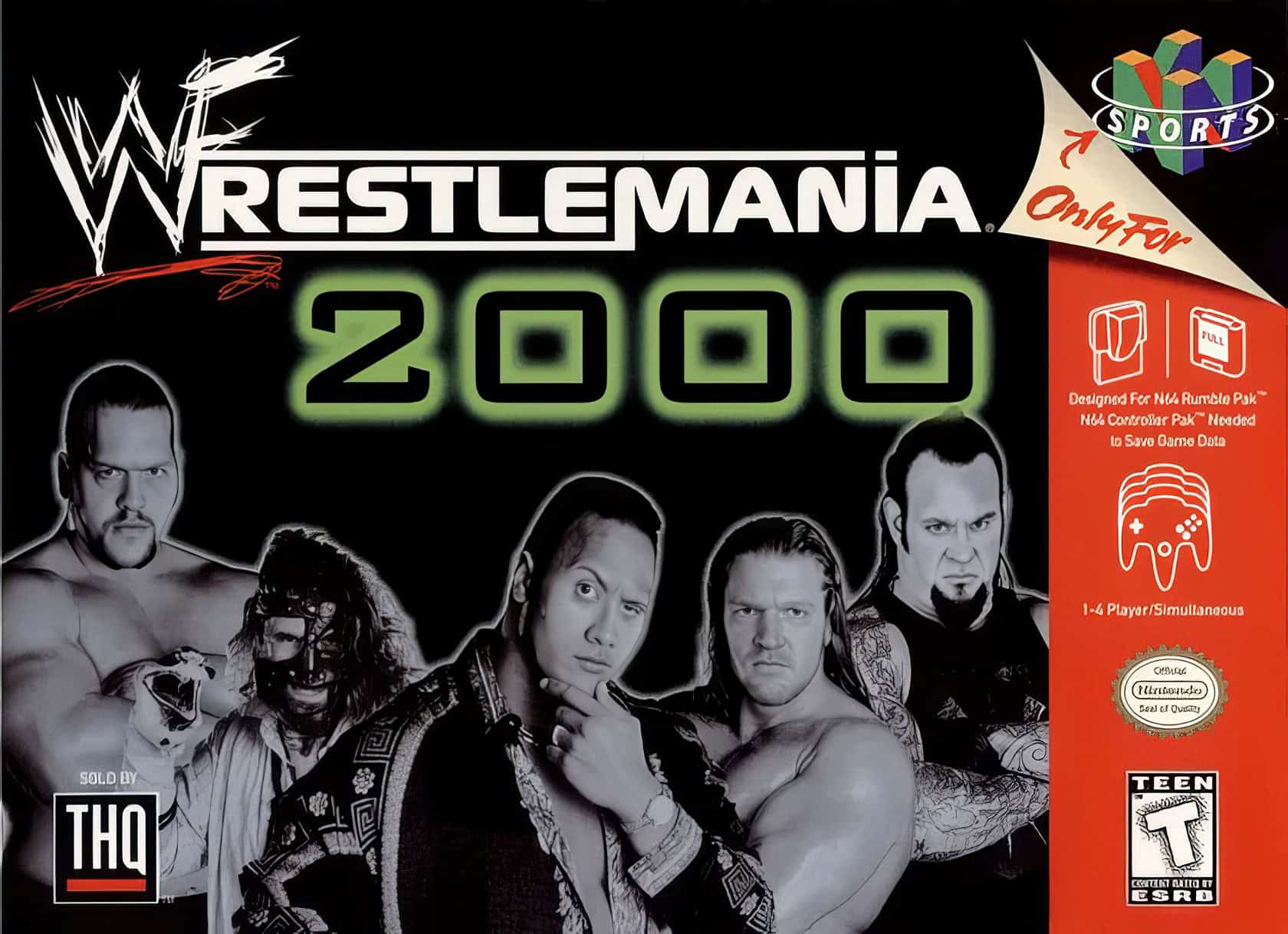
While Here Comes the Pain dominated the PlayStation era, WrestleMania 2000 established its own legacy on Nintendo 64. This October 1999 release earned a solid 7.3/10 rating and introduced significant features that altered wrestling games for years to come.
WrestleMania 2000 brought the impactful Create-a-Wrestler mode to wrestling fans. Players could build custom fighters from scratch, designing everything from appearance to movesets.
The game featured multiple match types including standard bouts, tag team contests, battle royales, and intense steel cage matches. The notable Attitude Meter system let wrestlers execute devastating special moves at crucial moments.
These features helped players enjoy video games with deeper customization than previous wrestling titles offered.
How did WCW/NWO Revenge influence wrestling games?
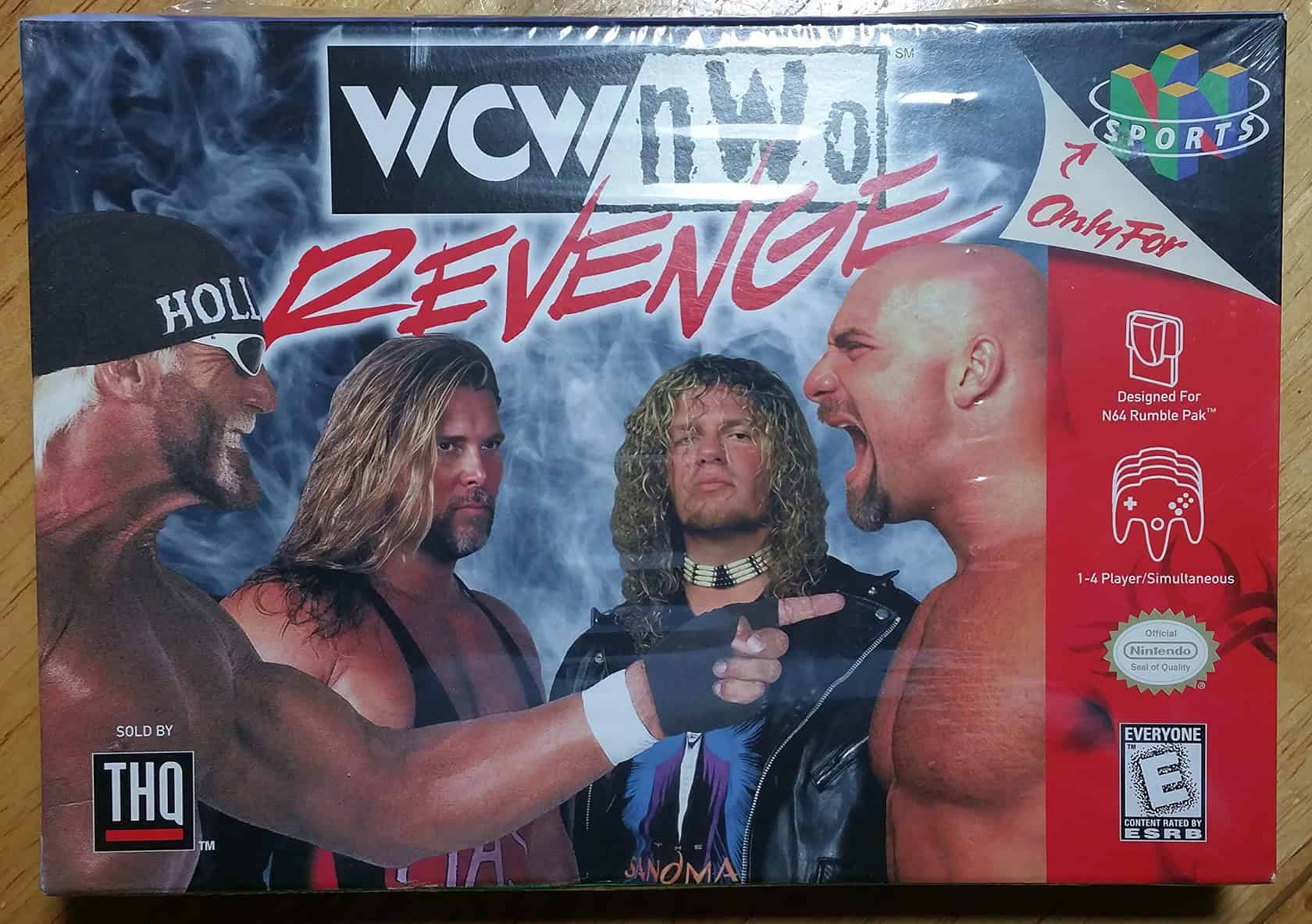
WrestleMania 2000 introduced solid features to Nintendo 64, but WCW/NWO Revenge significantly impacted wrestling games. Released in 1998 for Nintendo 64, this THQ creation introduced the unique grappling system that influenced every wrestling title that followed.
The game sold over 1.88 million copies, demonstrating fans’ enthusiasm for its new approach to pro wrestling action.
WCW/NWO Revenge established the basis for modern wrestling mechanics through its improved gameplay systems. The grappling controls felt natural, allowing players to execute moves like real WWE wrestlers.
This system influenced WWF WrestleMania 2000, WWF No Mercy, and many other titles. Wrestling games before Revenge relied on simple button mashing, but this game required skill and timing.
The impact extended beyond WCW games, affecting the entire sports entertainment genre and setting a new standard for future wrestling video games.
Popular Promotion-Based Wrestling Games
Wrestling games tied to specific promotions brought fans closer to their favorite brands, stars, and storylines than ever before… and each series carved out its own unique identity that still influences gaming today.
What defines the WWE Series of wrestling games?
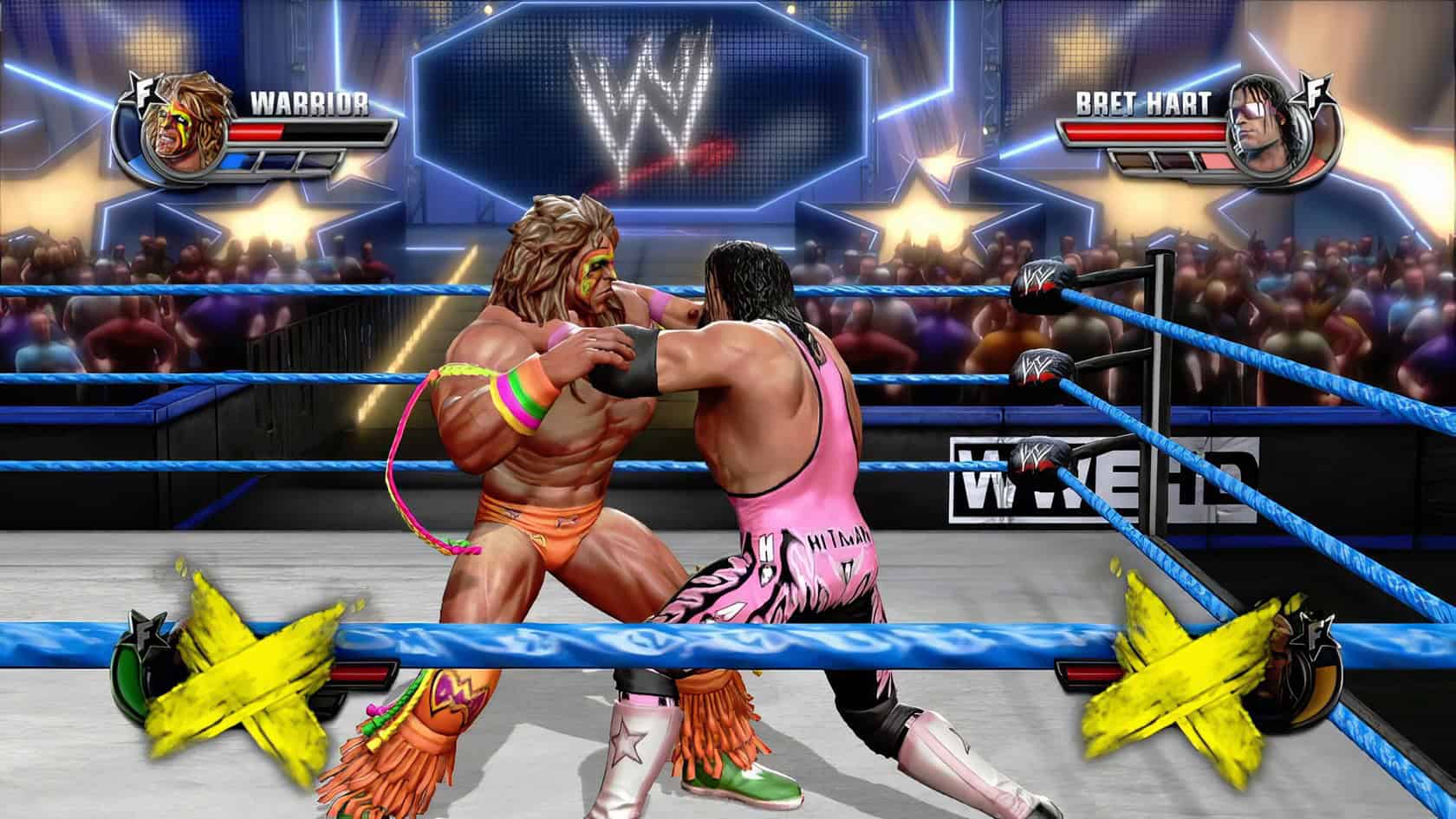
The WWE series stands out with its massive roster of over 200 wrestlers across different eras. WWE 2K24 earned an 8.5/10 rating by featuring legends like Hulk Hogan, The Rock, and modern stars like CM Punk.
These games capture the attitude era perfectly, bringing back fan-favorite moments from Monday Night Wars and the brand split between Raw and SmackDown. Players can relive classic matches like Royal Rumble battles, TLC matches with Edge and Christian, and submission contests featuring Kurt Angle.
WWE games excel at recreating authentic wrestling experiences through detailed arenas, entrance music, and signature moves. The series includes iconic wrestlers like Shawn Michaels, Bret Hart, and The Ultimate Warrior alongside current superstars.
WWE 2K series started in 2014 and delivers annual updates with expanding rosters that span from WWF legends to modern WWE Universe stars. Create-a-wrestler modes let players build custom fighters, while career modes follow storylines through different brands and championship pursuits across multiple wrestling promotions.
How do WCW Series games stand out?
WCW games changed everything for wrestling video games. Two WCW titles revolutionized the wrestling video game genre and boosted wrestling’s popularity across gaming communities. WCW/NWO Revenge delivered fast-paced action that made players feel like real wrestlers.
World Championship Wrestling games featured smooth controls that felt natural to gamers. Players often became wrestling fans through gameplay, discovering stars like Goldberg, Diamond Dallas Page, and the New World Order.
WCW Nitro brought television-style presentation to home consoles.
These games stood apart from WWF/E titles through their arcade-style approach. WCW games focused on quick matches and explosive moves rather than complex storylines. High engagement on social media indicates lasting impact among wrestling game fans.
Saturn, The Giant, and other WCW wrestlers became household names through these gaming experiences. The games captured WCW’s rebellious spirit that challenged WWE’s dominance during the Monday Night Wars.
WCW games didn’t just simulate wrestling, they made you live it with every grapple and slam.
What are notable ECW wrestling games?
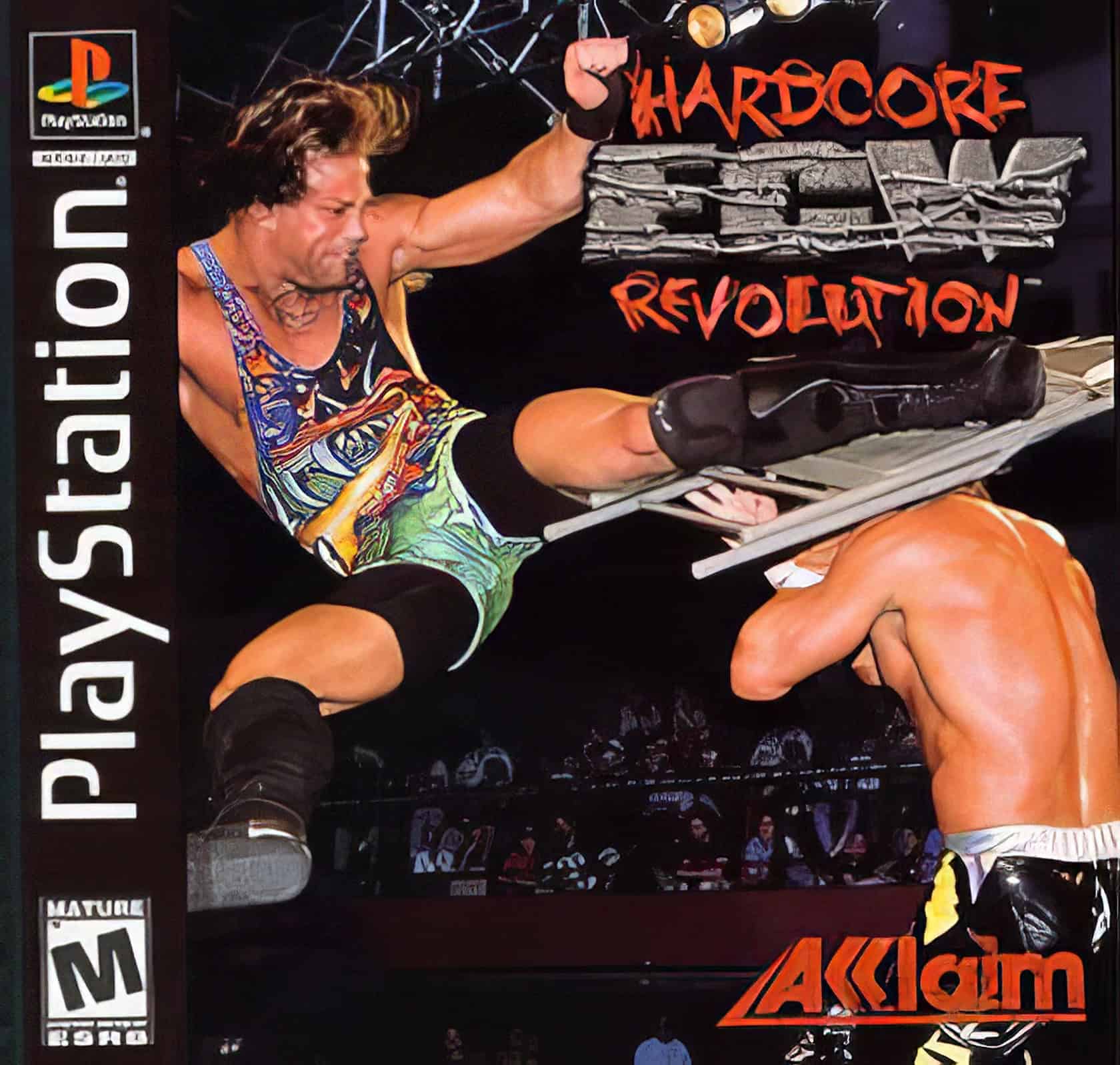
ECW Anarchy Rulz and ECW Hardcore Revolution stand as the most notable wrestling games from Extreme Championship Wrestling. Both titles focused on ECW’s hardcore wrestling style, bringing the promotion’s extreme matches to gaming consoles.
ECW Hardcore Revolution captured the raw energy of professional wrestlers like The Hardyz and other ECW stars. The game featured brutal match types that ECW fans loved, including hardcore matches with weapons and extreme stipulations.
ECW Anarchy Rulz followed with similar gameplay, emphasizing the violent, no-holds-barred action that made ECW different from World Wrestling Entertainment and other promotions.
What are the highlights of All Japan Pro Wrestling Titles?
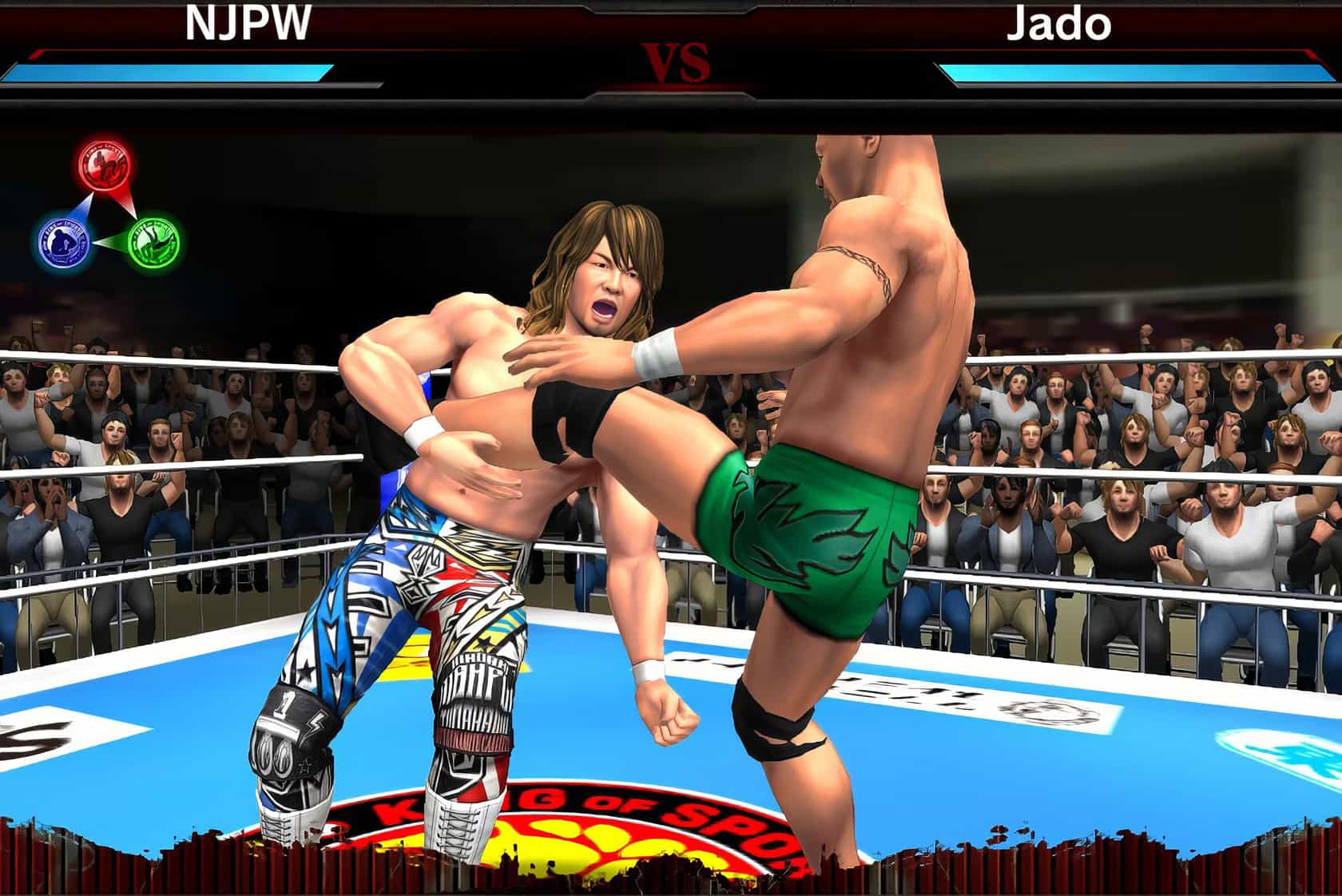
All Japan Pro Wrestling games captured the pure essence of Japanese wrestling culture. These titles featured legendary wrestlers like Andre the Giant and showcased technical wrestling styles that differed from WWE’s entertainment focus.
Founded on October 21, 1972, All Japan Pro Wrestling brought authentic Japanese wrestling mechanics to gaming consoles, emphasizing submission holds and mat-based combat over flashy moves.
Fire Pro Wrestling series dominated this category, offering deep customization options and realistic match pacing. Players could recreate classic matches with precise grappling systems that rewarded timing over button mashing.
The games included detailed create-a-wrestler modes that let fans build entire rosters of Japanese legends, complete with signature moves and fighting styles that matched their real-world counterparts.
Moving beyond promotion-specific titles, brandless wrestling games offered unique experiences that transcended company boundaries.
Brandless and Independent Wrestling Video Games
Independent wrestling games broke free from major promotion licenses… creating unique experiences that focused on pure wrestling mechanics. Fire Pro Wrestling Series and Wrestling Empire prove that great gameplay beats flashy brand names every time.
What is unique about the Fire Pro Wrestling Series?
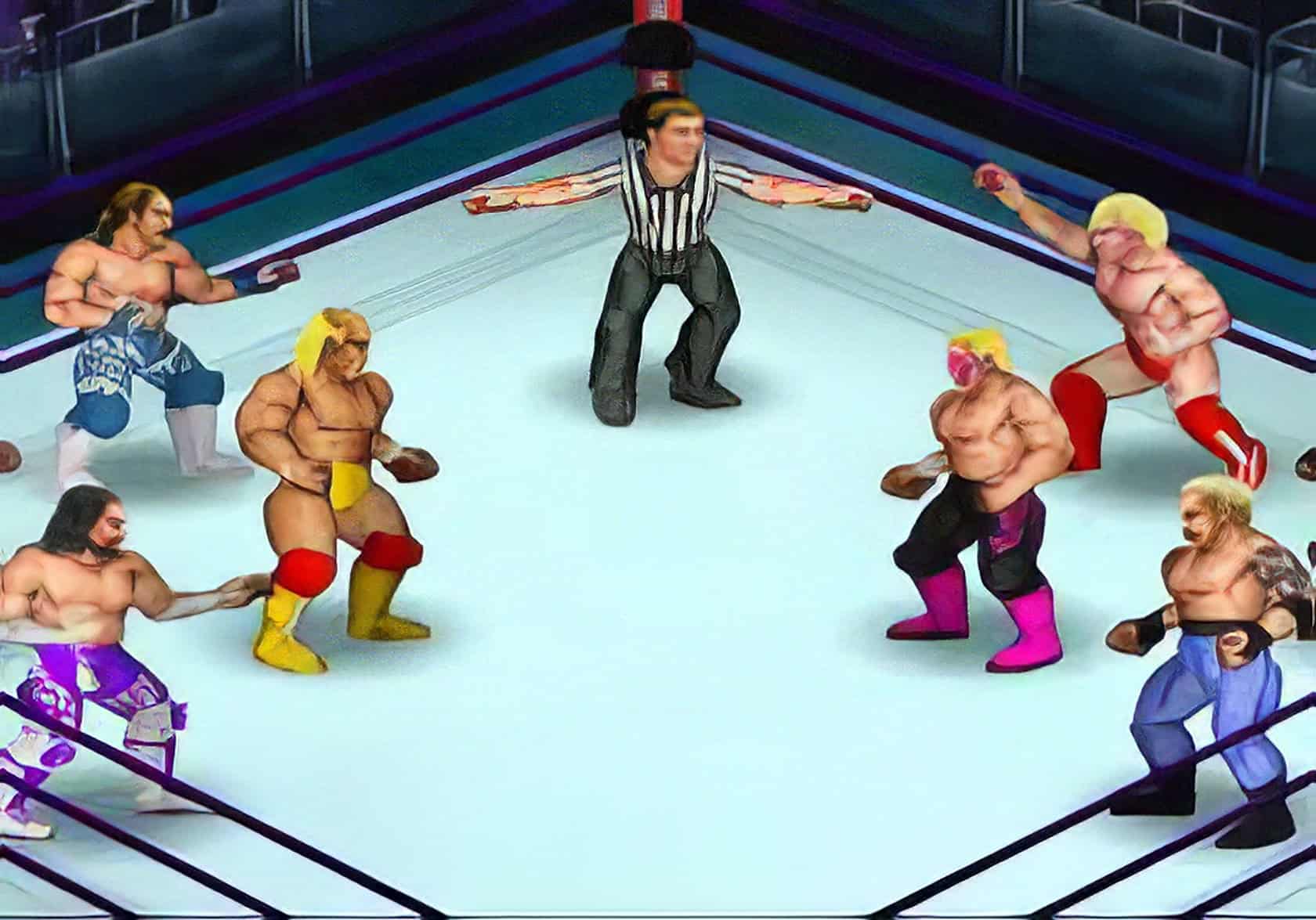
Fire Pro Wrestling debuted in 1989 and stands apart from other wrestling games through its deep, strategic gameplay and extensive storytelling features. The series costs $19.99 on Steam and offers thousands of community-created wrestlers for download, giving players endless roster options.
Unlike typical wrestling titles that focus on button-mashing action, Fire Pro Wrestling demands timing and strategy from players who must master complex grappling systems.
The game’s pixel art style creates a timeless visual appeal that many wrestling fans prefer over modern 3D graphics. Players can customize every aspect of their wrestlers, from movesets to entrance music, creating unique characters that rival official WWE or New Japan Pro Wrestling rosters.
The series allows fans to recreate classic matches featuring legends like Randy Savage, Mr. Perfect, and The Rock, or build entirely new storylines with custom fighters.
Wrestling Empire represents another popular choice among indie wrestling game enthusiasts.
Why is Wrestling Empire popular among indie wrestling games?
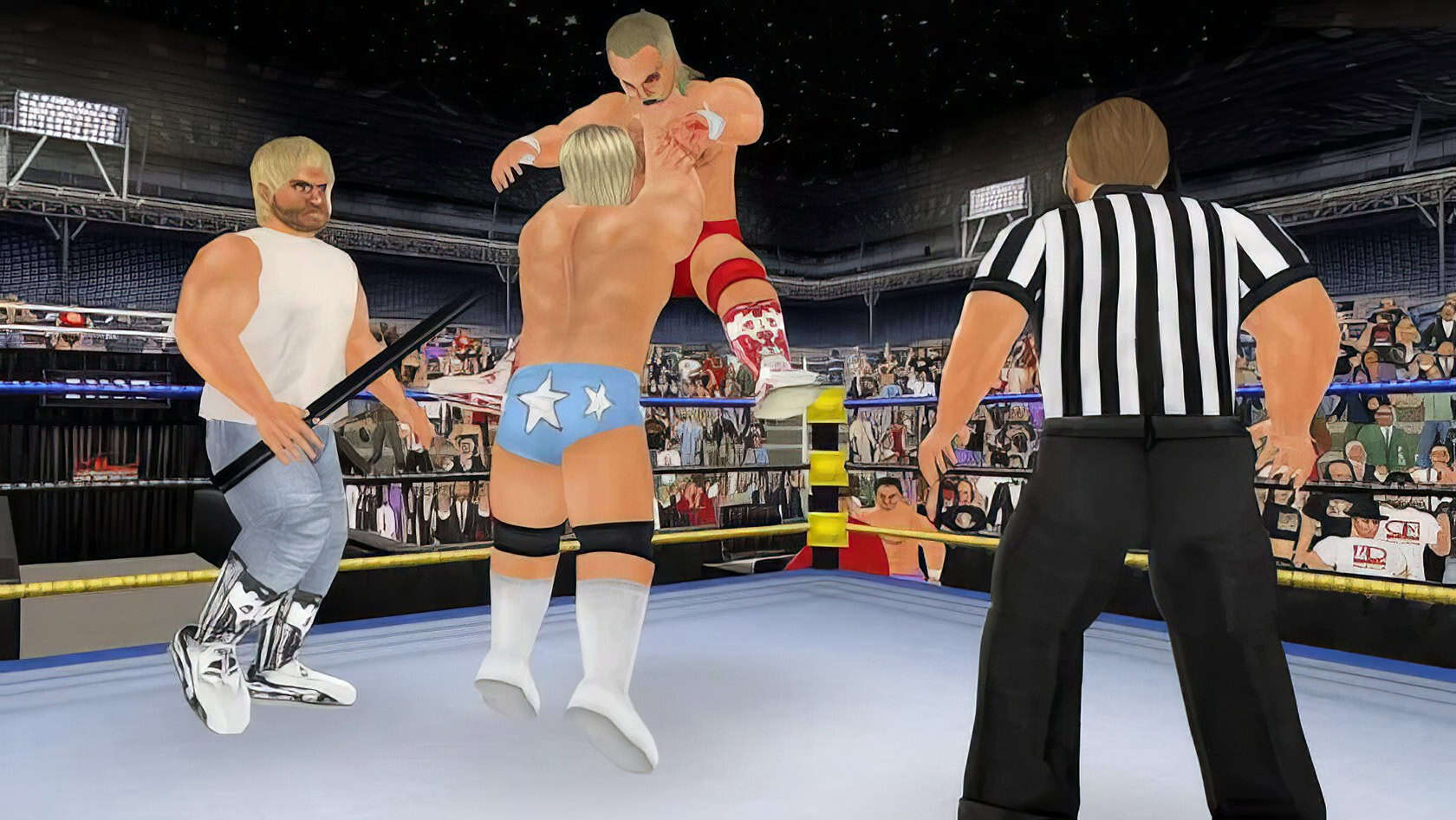
Mat Dickie released Wrestling Empire on January 11, 2021, creating a massive hit among indie wrestling fans. The game features 350 different wrestlers, giving players an enormous roster that rivals major WWE titles like WWE 2K19 and WWE 2K23.
Built on a completely new engine, Wrestling Empire delivers smoother gameplay than previous indie wrestling games. Players can access the game on iOS, Android, Nintendo Switch, and Windows platforms.
TheGamer ranked Wrestling Empire 5th among top wrestling games on Nintendo Switch, putting it ahead of many big-budget titles. The game’s popularity stems from its deep customization options and quirky physics system that creates hilarious moments during matches.
Unlike WWE games that focus on realistic graphics, Wrestling Empire embraces a cartoonish style that appeals to geeks who appreciate retro gaming aesthetics. The title costs significantly less than WWE 2K20 or WWE 2K15, making it accessible to budget-conscious gamers who want quality wrestling action.
Memorable Features of Classic Wrestling Games
Classic wrestling games packed features that made fans come back for hours. These elements turned simple button-mashing into deep experiences that captured the real drama of sports entertainment.
How do Create-A-Wrestler modes enhance gameplay?
Create-A-Wrestler modes transform wrestling games from simple arcade experiences into personal storytelling platforms. Players build custom fighters with unique movesets, entrance music, and signature finishing moves that reflect their creative vision.
These modes reduce the need for licensed characters, giving developers freedom to focus on gameplay mechanics rather than expensive celebrity contracts. Fire Pro Wrestling World stands as the prime example of player-driven CAW systems, offering deep customization that has influenced wrestling games for over 20 years.
CAW features let players recreate legendary wrestlers like Rowdy Roddy Piper, Sgt. Slaughter, or The Honky Tonk Man without licensing restrictions. Gamers craft original characters for royal rumble matches, triple threat encounters, and even specialty bouts like casket matches.
The customization options extend beyond appearance to include logos, taunts, and fighting styles that make each created wrestler feel authentic. This system keeps games fresh long after release, as players continuously generate new content and share creations with the community.
What role do storylines and career modes play?
Storylines and career modes form the core of wrestling games. These features simulate a wrestler’s progression from rookie to champion. Career modes allow players to experience the highs and lows of professional wrestling.
Games such as WWE SmackDown vs. Raw 2007 and WWE ’13 feature epic storylines depicting The Rock’s ascent to stardom and the invasion storyline. Players encounter heel turns, triple threat matches, and special guest referee scenarios.
The McMahons feature as key characters who influence your wrestler’s path.
Current games offer the option to create and manage WWE Universes. This significantly improves player engagement and immersion. Updates enhance the storyline experience with new content.
Players can recreate famous rivalries between Chris Benoit and The Big Show, or see Shane McMahon’s unexpected returns. Career modes on Nintendo 3DS versions provide portable wrestling drama.
These story elements distinguish great wrestling games from basic fighting games. Multiplayer enjoyment becomes the next essential component that defines classic wrestling experiences.
Why is multiplayer fun important in wrestling games?
Career modes create personal stories, but multiplayer brings friends together for epic battles. Wrestling games shine brightest during party gatherings where four players can compete simultaneously.
Multiplayer modes enhance fan engagement and create a competitive environment that keeps players coming back. Games like WWE SmackDown vs. Raw 2008 and WWE SmackDown vs. Raw 2009 support up to four players, making them perfect staples at parties.
This feature increases replayability significantly, as matches feel fresh with different opponents and unpredictable human strategies. The broader audience appeal means casual fans can jump in alongside hardcore wrestling geeks, creating memorable moments that single-player modes simply cannot match.
The Evolution of Graphics and Gameplay
Wrestling games started with simple 8-bit sprites on SNES classics like WWF WrestleFest, where pixelated wrestlers like The Hulkster and Big Boss Man threw basic punches and kicks.
These early titles used flat 2D graphics that made characters look like colorful blocks, but players loved the arcade-style action anyway. Saturday Night Slam Masters showed how developers could make wrestling fun with limited graphics power.
Then came the jump to 3D models in games like WWF Attitude and SmackDown vs Raw, where wrestlers finally looked like real people instead of cartoon sprites. The Rock’s entrance animations became smooth and lifelike, while complex grappling systems replaced simple button mashing.
WWE 2K14 and WWE 2K16 pushed graphics even further with detailed facial expressions and realistic body movements.
Modern titles like WWE 2K18 feature photo-realistic wrestlers who move with fluid animations during
How did early pixelated graphics define classic wrestling games?
Early pixelated graphics created wrestling games’ visual identity through simple 8-bit and 16-bit sprites. Games like WWF WrestleMania featured pixelated graphics that captured wrestling’s essence despite technical limits.
These blocky character designs made wrestlers instantly recognizable, even with limited pixels. Players could spot The Hulkster, The Rock’s signature look, or Big Boss Man’s uniform from across the screen.
The SNES delivered cleaner pixel art that improved character details while keeping that classic arcade feel.
Pixelated visuals shaped gameplay mechanics in fundamental ways. Limited complexity of movesets worked perfectly with simple button combinations. Saturday Night Slam Masters and WWF WrestleFest proved that basic graphics could deliver exciting matches.
These foundational gameplay mechanics influenced every wrestling title that followed. The nostalgic charm of pixel art continues attracting fans to classic titles like WWF Attitude and early SmackDown vs Raw games.
Doink the Clown’s colorful sprite and Ted DiBiase’s sharp suit showed how pixel artists maximized visual impact with minimal resources.
What changes came with the transition to 3D models?
The shift from 2D sprites to 3D models brought blocky graphics that defined late 1990s wrestling games. Titles like WWF WrestleMania: The Arcade Game started this change, though characters looked rough compared to today’s standards.
Developers struggled with GPU technology limits, creating wrestlers that resembled walking boxes more than real athletes. WWE SmackDown vs. Raw 2010 showed major progress years later, with smoother character models and better facial features.
GPU technology improvements through the 2000s changed everything for wrestling fans. Games could show detailed arenas, crowd reactions, and signature moves with real impact. Female wrestlers and divas got better representation as 3D models allowed for more realistic body types and animations.
The Rock’s finishing moves looked spectacular with improved lighting effects. Real-time ray tracing and VR technology now create immersion levels that make players feel like they’re ringside at Double or Nothing events.
Fan-Favorite Mechanics in Classic Games
The magic of classic wrestling games lives in their core mechanics – those satisfying grappling systems and perfectly timed reversals that made every match feel like a real fight, and there’s so much more to discover about what made these systems tick.
How do grappling systems work in classic wrestling games?
Classic wrestling games used different grappling systems to create unique fighting experiences. WWF No Mercy featured a timing-based system where players pressed buttons at specific moments to execute moves.
Players grabbed opponents first, then chose from multiple attack options based on their position. WCW/NWO Revenge used similar mechanics but added more reversal opportunities during grapples.
WWF Warzone and WWF Attitude introduced complex controls that required specific button combinations for different grappling moves. These games made players memorize multiple sequences to perform basic holds and throws.
Power Move Pro Wrestling simplified the 3D fighting system by using fewer button presses for grappling actions. WCW Nitro and WCW Thunder focused on arcade-style grappling that felt faster and more responsive than simulation-based systems.
Each game’s grappling mechanics determined how players approached matches, from quick arcade action to strategic wrestling simulation.
What makes reversal mechanics appealing to players?
Reversal mechanics create dramatic moments through successfully timed counters that mirror the unpredictability of real wrestling matches. Players feel genuine excitement during WWE Raw matches or WWE ’13 bouts when they execute perfect reversals against opponents’ signature moves.
These systems enhance player engagement with strategic counters, forcing gamers to stay alert and react quickly to incoming attacks. The Rock’s finishing moves become more thrilling when players can reverse them at the last second, creating memorable gaming moments.
Reversal systems increase importance in multiplayer modes with adaptive strategies that keep matches competitive. Friends battling in WWE All Stars find that mastering reversals prevents one player from dominating completely.
The mechanics contribute to realism, mimicking the skill and unpredictability that defines professional wrestling. Players develop timing skills that transfer across different wrestling games, from classic titles to modern releases.
Successful reversals often lead to immediate counter-attacks or pinfall opportunities, making each defensive move potentially match-altering. These mechanics evoke nostalgia among wrestling game fans, making them a valued aspect of the genre’s most beloved titles.
Legacy of Classic Wrestling Video Games
Classic wrestling games shaped today’s sports entertainment titles in ways most fans don’t realize… and their influence runs deeper than you might expect.
These old-school gems created the blueprint for modern wrestling simulators. WWE ’13 borrowed heavily from No Mercy’s grappling system. The Rock’s signature moves first appeared in early PlayStation titles.
Eric Bischoff’s storylines from WCW games influenced today’s career modes.
Fire Pro Wrestling’s complex mechanics live on in indie titles. New Japan Pro-Wrestling games learned from classic arcade fighters. The biggest show moments from WrestleMania 2000 still inspire cutscenes today.
Worlds collide when developers mix old features with new tech. Even controversial matches like bra and panties match options trace back to Attitude Era games. WWE’s current create-a-wrestler tools evolved from THQ’s early systems.
The bar for wrestling game quality was set decades ago… an.
How have classic games impacted modern wrestling titles?
Old wrestling games changed how developers make modern titles. WWE ’13 and earlier games showed players wanted deep customization options, realistic storylines, and smooth gameplay mechanics.
These classic titles set the standard for create-a-wrestler modes that modern games still use today. Fire Pro Wrestling series proved that complex grappling systems could work, inspiring today’s reversal mechanics and submission holds.
Player expectations rose dramatically after experiencing legendary titles like WWF No Mercy and WCW/NWO Revenge. Modern wrestling games now include authentic story modes, detailed career paths, and extensive character customization because classic games proved these features worked.
The biggest show moments from older titles taught developers that spectacle matters just as much as gameplay. Today’s WWE games incorporate nostalgia elements while attracting new generations of players who discover these classic mechanics through updated graphics and improved controls.
Why do nostalgia and popularity keep classic games alive?
Nostalgia acts as a powerful time machine that transports players back to cherished memories of their gaming youth. Classic wrestling titles like WWE ’13 and games featuring The Rock’s legendary matches trigger emotional connections that modern games struggle to replicate.
These retro experiences offer comfort, familiarity, and a direct link to simpler times when wrestling games focused on pure fun rather than complex mechanics.
Timeless gameplay mechanics ensure these classic titles maintain their replayability decades after release. Vibrant communities keep these games alive through conventions, social media discussions, and online tournaments.
Players share stories, create content, and introduce new generations to these legendary titles. The combination of emotional attachment and solid game design creates a lasting appeal that transcends technological limitations, proving that great gameplay never truly dies.
How Will Classic Wrestling Video Games Evolve in 2025?
WWE 2K25 showcases advanced graphics that make classic wrestling games look primitive. Modern developers focus on smoother matches with lag-free online play, creating experiences that surpass WWE ’13 and earlier titles.
Players demand authentic story modes that align with WWE arcs, pushing developers to craft deeper narratives. The Rock’s signature moves get motion-captured precision, while extensive customization options let fans create wrestlers with incredible detail.
Online federations dominate the gaming community’s priorities for 2025. Fair matchmaking systems prevent experienced players from crushing newcomers. Content sharing platforms allow wrestlers to download custom arenas, entrance music, and storylines created by other fans.
WWE’s partnership with streaming services creates cross-platform events where virtual matches mirror real pay-per-view shows. Classic game mechanics like reversal systems get refined with AI assistance that learns player patterns.
People Also Ask
What made WWE ’13 stand out among classic wrestling games?
WWE ’13 featured The Rock’s return to the franchise after years away. The game included his signature moves, authentic voice work, and classic matches that fans loved.
How did WWE’s video game series evolve over the years?
WWE’s games grew from simple arcade fighters to complex simulations. Each title added new features, better graphics, and more realistic wrestling action.
Which classic wrestling games are considered legendary titles?
Games like WWE ’13, along with earlier WWF and WCW titles, earned legendary status. These games captured the excitement of professional wrestling perfectly.
What features made The Rock’s appearances in wrestling games so popular?
The Rock’s charisma translated well to video games through his authentic moves, catchphrases, and storylines. His presence boosted sales and fan excitement significantly.
References
https://en.wikipedia.org/wiki/WWF_No_Mercy_(video_game)
https://wrestlesphere.com/the-greatest-wrestling-video-games-of-all-time/ (2025-03-26)
https://www.thefamicast.com/2020/04/wwf-wrestlemania-2000-retro-review.html (2020-04-23)
https://retroxp.substack.com/p/25-years-of-the-nwo-wcwnwo-revenge
http://www.wwe.com/article/wwe-video-games-history (2017-09-12)
https://www.facebook.com/groups/wcwworldchampionshipwrestling/posts/1693304851270500/ (2025-02-19)
https://en.wikipedia.org/wiki/Category:Extreme_Championship_Wrestling_video_games
https://en.wikipedia.org/wiki/All_Japan_Pro_Wrestling
https://www.digitaltrends.com/gaming/fire-pro-wrestling-world/ (2023-04-25)
https://en.wikipedia.org/wiki/Wrestling_Empire
https://steamcommunity.com/app/1252300/discussions/0/2269194717031546928/ (2020-04-22)
https://research.cip.cgiar.org/default.aspx/wp8QAF/4441448/smackdown_vs_raw-2010_career_mode.pdf
https://www.denofgeek.com/games/best-wrestling-games/
https://www.operationsports.com/ranking-best-wwe-and-wrestling-video-games-of-all-time/
https://rocketbrush.com/blog/the-evolution-of-3d-graphics-and-its-impact-on-game-art-styles
https://en.wikipedia.org/wiki/Sports_video_game
https://dailyddt.com/2023/08/09/6-classic-wrestling-game-mechanics/
https://library.oapen.org/bitstream/id/1e716483-df71-4d18-8524-e7c8e4acf60c/9783839453452.pdf
https://terminalgamer.com/2025/01/06/retro-gaming-why-nostalgia-keeps-old-school-games-alive/
